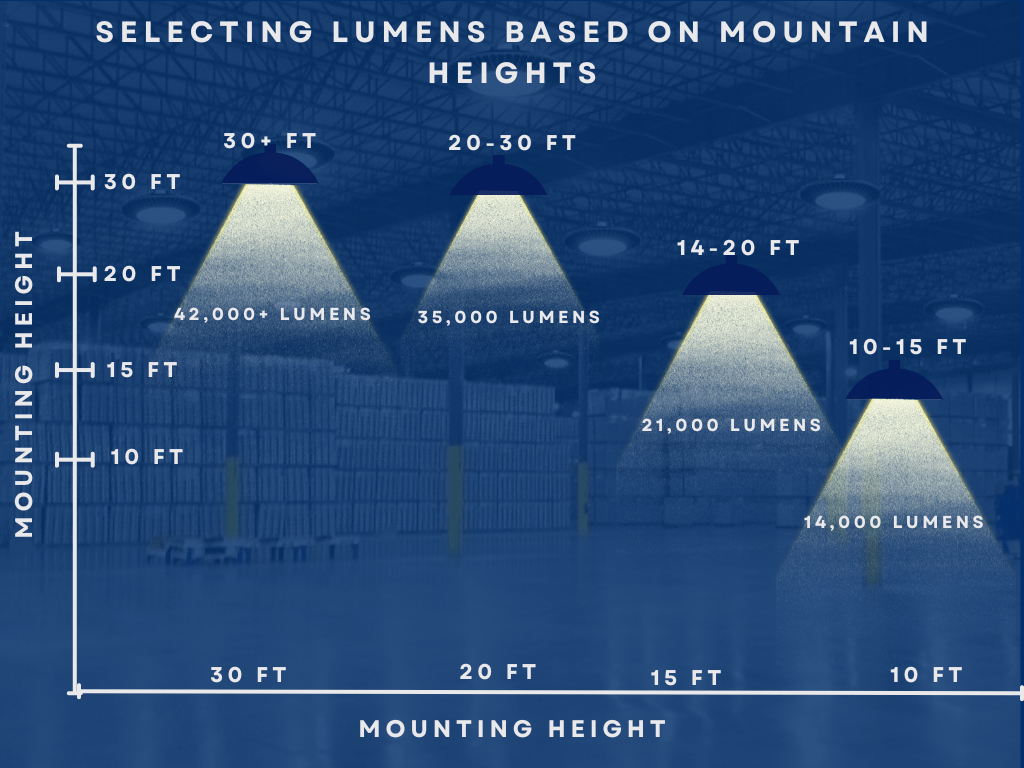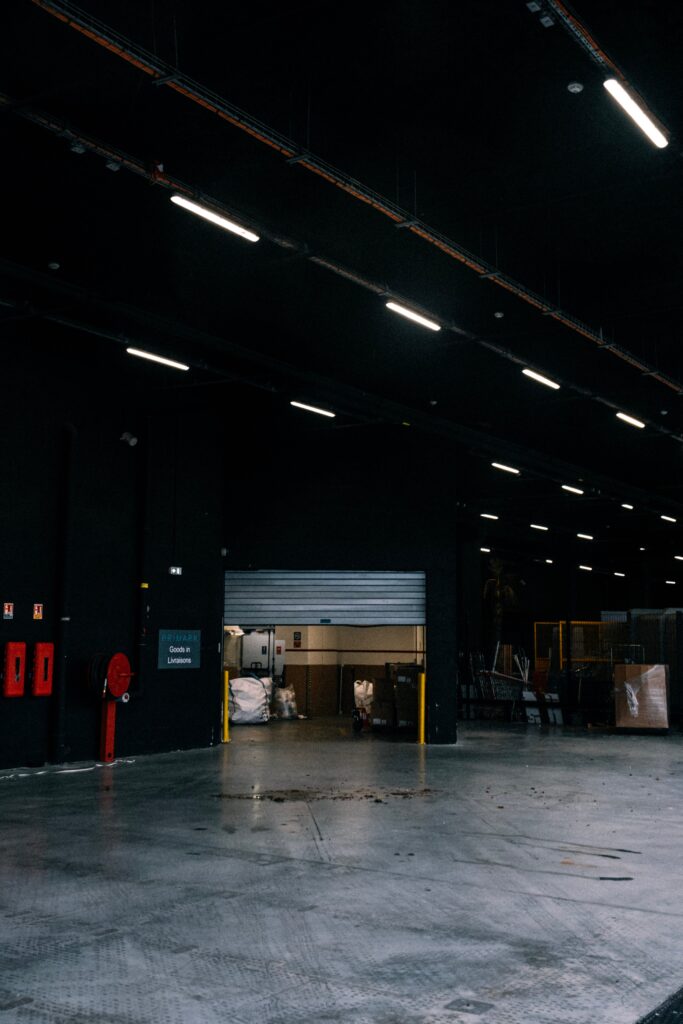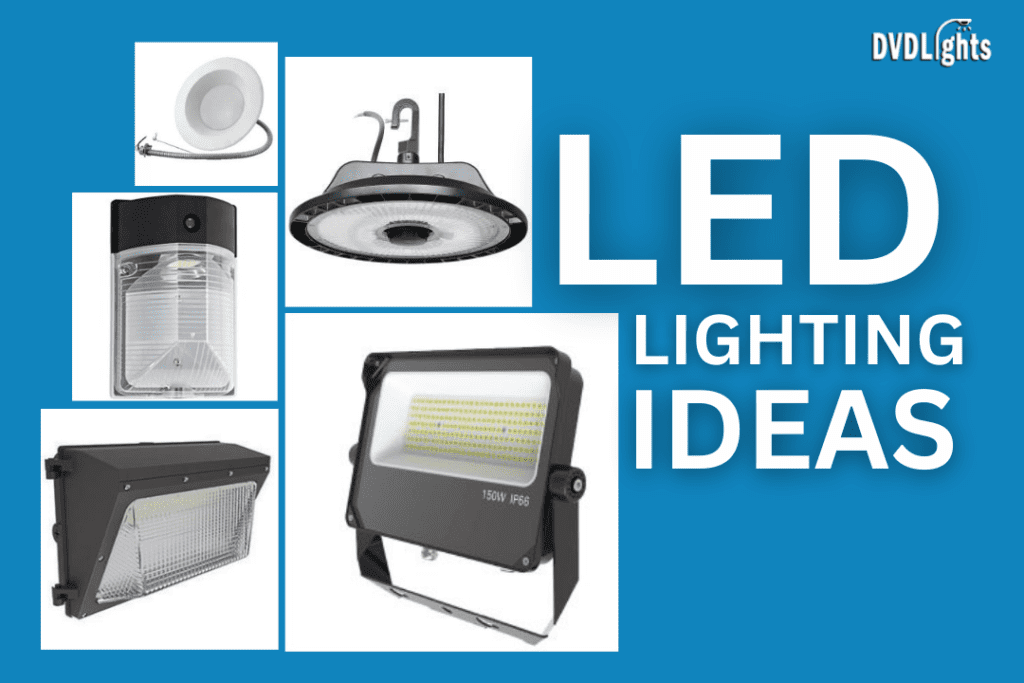Selecting the right lumens output and fixture for different mounting heights is crucial for achieving the optimal lighting for any space. Whether it’s for commercial or industrial outdoor areas, understanding how lumens and fixture types interact with mounting heights can transform the functionality and ambiance of a space. This comprehensive guide will help you make informed decisions for your lighting needs.
Understanding Right Lumens and Mounting Heights
Lumens measure the total amount of visible light emitted by a source, providing a more accurate representation of brightness than watts. As mounting height increases, the intensity of light reaching the surface decreases, necessitating higher lumen outputs for adequate illumination.
Mounting height refers to the distance between the light source and the area it is intended to illuminate. Different spaces and applications require different mounting heights and, consequently, varying lumen outputs for effective lighting.
Selecting Lumens Based on Mounting Height

The key to selecting the lumens for different mounting heights lies in understanding the space’s requirements. For lower ceilings (up to 8 feet), lighting fixtures with lower lumen output might suffice, offering cozy, ambient lighting without overwhelming the space. In contrast, high-ceiling environments, such as warehouses or large retail spaces with ceilings above 15 feet, require fixtures with significantly higher lumen outputs to ensure light effectively reaches the intended surfaces.
Fixture Types and Their Role
The type of fixture is just as crucial as the lumen output. Fixtures like downlights, led troffers and flat panels designed for high mounting heights often feature optics that direct light downward more efficiently, for warehouses, fixtures like led linear highbays and led UFO highbays are more suitable in maximizing the light delivered to the work surface or floor. Conversely, fixtures for lower ceilings might focus more on diffusing light evenly to avoid harsh shadows or glare.
Best Practices for Different Spaces
Commercial Spaces:
Office settings require careful consideration of both task lighting and ambient lighting. For ceilings up to 10 feet, fixtures in the range of 2,000 to 3,500 lumens can provide sufficient illumination for workspaces.
Industrial and Warehouse:
In spaces with high ceilings (15 feet and above), selecting fixtures with 10,000 to 20,000 lumens or more ensures that light adequately penetrates down to the floor, enhancing safety and visibility.
Photo by Pixabay: https://www.pexels.com/photo/low-angle-view-of-slightly-opened-door-structure-221047/
FAQs
How do I calculate the necessary lumens for a room?
- Calculate the room’s square footage and multiply it by the recommended lumens per square foot for the specific type of space. For general living spaces, 20 lumens per square foot is a good starting point.
Can the type of fixture affect the perceived brightness?
- Yes, the design of the fixture, including its reflector and lens, can influence how light is distributed and perceived. Optics designed for high mounting heights can focus light more effectively to the ground, increasing perceived brightness.
Should I consider LED fixtures for high mounting heights?
- Absolutely. LED fixtures are ideal for high mounting heights due to their high lumen output, energy efficiency, and longer lifespan, reducing the need for frequent replacements in hard-to-reach areas.
How does color temperature fit into selecting lighting?
- Color temperature, measured in Kelvin, affects the look and feel of a space. Warmer colors (2700K – 3000K) are ideal for cozy, intimate settings, while cooler colors (3500K – 5000K) promote alertness and are better suited for task-oriented environments.
According to Karman, author of Story Box “Calculating the lumens and watts needed to illuminate a room is an essential element to ensure that the lighting is adequate for the setting and is neither too dim nor too intense.”
Conclusion
Selecting the right lumen output and fixture for varying mounting heights is essential for creating well-lit, functional, and inviting spaces. By considering the specific needs of your space and following these guidelines, you can ensure that your lighting is both effective and efficient, enhancing the ambiance and usability of any environment.




